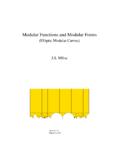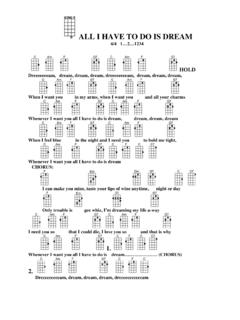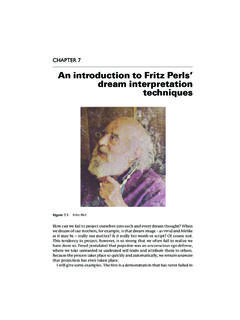Transcription of Motives — Grothendieck's Dream
1 Motives grothendieck s DreamJames S. MilneApril 24, 2012; AbstractGrothendieck introduced the notion of a motif in a letter to Serre in 1964. Laterhe wrote that, among the objects he had been privileged to discover, they were the mostcharged with mystery and formed perhaps the most powerful instrument of this article, I shall explain what Motives are, and why grothendieck valued them in topology ..12 Cohomology in algebraic geometry ..23 Why is there is no algebraically definedQcohomology?..34 Algebraic cycles.
2 45 Definition of Motives ..66 What is known about the categories of Motives ..77 The Weil conjectures revisited ..108 Zeta functions of Motives ..129 The conjecture of Birch and ..1410 Final note..151 Cohomology in topologyAttached to a compact manifoldXof dimension2n, there are cohomology ;Q/;:::; ;Q/;which are finite-dimensionalQ-vector spaces satisfying Poincar e duality (Hiis dual toH2n i), a Lefschetz fixed point theorem, and so on. There are many different ways ofdefining them singular cochains, Cech cohomology, derived functors but the different The origin of this article is a lecture I gave at the University of Michigan on February 3, 2009.
3 A Chinesetranslation of it (by Xu Kejian) was published in Mathematical Advances in Translation, , , 193-206,2009. I thank Xu Kejian for his comments and for suggesting the present toutes les chose math ematiques que j avais eu le privil`ege de d ecouvrir et d amener au jour, cetter ealit e des motifs m appara t encore comme la plus fascinante, la plus charg ee de myst`ere au coeur m eme del identit e profonde entre la g eom etrie et l arithm etique . Et le yoga des motifs .. est peut- etre le pluspuissant instrument de d ecourverte que j aie d egag e dans cette premi`ere p eriode de ma vie de math , R ecoltes et Semailles, COHOMOLOGY IN ALGEBRAIC GEOMETRY2methods all give exactly the same groups, provided they satisfy the Eilenberg-Steenrodaxioms.
4 WhenXis a complex analytic manifold, there are also the de Rham These are vector spaces overC, but they are not really new ' ;Q/ Cohomology in algebraic geometryNow consider a nonsingular projective algebraic varietyXof dimensionnover an alge-braically closed fieldk. ThusXis defined by polynomials overk, and the conditions meanthat, whenkDC, the the variety form a compact manifold of s work on the numbers of points on algebraic varieties with coordinates in finitefields led him in 1949 to make his famous Weil conjectures concerning the number ofsolutions of equations over finite fields and their relation to the topological properties ofthe varieties defined by the corresponding equation over the field of complex numbers.
5 In particular, he found that the numbers of points seemed to be controlled by the Bettinumbers of a similar algebraic variety overC. For example, for a curveXof genusgoverthe fieldFpDZ=pZofpelements, the points on the curve satisfies theinequality p 1 2gp12; gDgenus ofX:(1)Weil was able to predict the Betti numbers of certain hypersurfaces overCby countingthe numbers of points on a hypersurface of the same dimension and degree overFp, andhis predictions were confirmed by Dolbeault. It was clear that most of Weil s conjectureswould follow from the existence of a cohomology theory for algebraic varieties with goodproperties (Qcoefficients, correct Betti numbers, Poincar e duality theorem, Lefschetz fixedpoint theorem, and so on).
6 In fact, as we shall see, no such cohomology theory exists withQcoefficients, but in the following years attempts were made to find a good cohomologytheory with coefficients in some field of characteristic zero other thanQ. Eventually, in the1960s grothendieck defined etale cohomology and crystalline cohomology, and showed thatthe algebraically defined de Rham cohomology has good properties in characteristic problem then became that we had too many good cohomology theories!Besides the usual valuation onQ, there is another valuation for each prime number`defined byj`rmnjD1=`r; m;n2 Zand not divisible by`:Each valuation makesQinto a metric space, and on completing it we obtain fieldsQ2,Q3,Q5,:::,R.
7 For each prime number`distinct from the characteristic ofk, etale cohomologygives cohomology ;Q`/;:::; ;Q`/which are finite-dimensional vector spaces overQ`and satisfy Poincar e duality, a Lefschetzfixed point formula, and so on. Also, there are de Rham , which arefinite-dimensional vector spaces overk, and in characteristicp 0, there are crystallinecohomology groups, which are finite-dimensional vector spaces over a field of characteristiczero (field of fractions of the ring of Witt vectors with coefficients ink).
8 These cohomology theories can t be the same, because they give vector spaces oververy different fields. But they are not unrelated, because, for example, the trace of the map2 The symbol'denotes WHY IS THERE IS NO ALGEBRAICALLY DEFINEDQCOHOMOLOGY?3 ! by a regular map WX!Xof algebraic varieties is arationalnumber independent of the cohomology theory3. Thus, in many ways, they behave as thoughthey all arose from an algebraically definedQcohomology, but we know they don Why is there is no algebraically definedQcohomology?
9 I give two explanations, the first of which applies in nonzero characteristic, and the secondin all EXPLANATIONAn elliptic curveEis a curve of genus1with a chosen point (the zero for the group structure).OverC, isomorphic to the quotient ofCby a lattice (thus, topologically it is atorus). The endomorphisms ofEare the complex numbers such that , from whichit follows easily that a field of degree2overQ. Thecohomology ;Q/has dimension2as aQ-vector space, and so in the secondcase it has dimension1as an characteristicp 0, there is a third possibility, namely, be a divisionalgebra (noncommutative field) of degree4overQ.
10 The smallestQ-vector space such adivision algebra can act on has dimension4. Thus there is noQ-vector ;Q/such ;Q`/' ;Q/ QQ`as an EXPLANATIONLetXbe a nonsingular projective variety over an algebraically closed fieldkof characteristiczero (and not too big). When we choose an embeddingk!C, we get a complex it is known ;Q`/' ;Q/ Q` kC' ;Q/ QC:In other words, each embeddingk ,!Cdoesdefine aQ-structure on the different cohomol-ogy groups. However, different embeddings give differentQ-structures, demonstrating thatthey don t come from an algebraically see this, note that because, becauseXis defined by finitely many polynomials havingonly finitely many coefficients, it has a modelX0over a subfieldk0ofksuch thatkisan infinite Galois extension ofk0 let be the Galois group ofkoverk0.

















